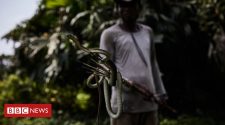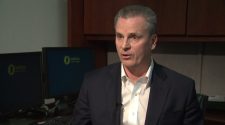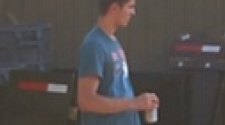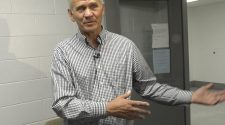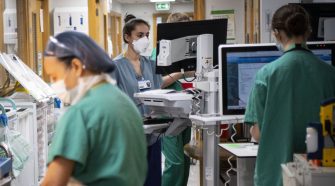The IMAX movie “Asteroid Hunters” looks at the threat planet Earth faces from a potential asteroid … [+]
IMAX / Asteroid Hunters
While most of space is vast and empty—hence the name “space”—the reality is that there are countless asteroids, comets and other debris zooming through our solar system as well. Most keep a safe distance, but many do, in fact, crash into Earth. A new IMAX movie, “Asteroid Hunters,” takes a look at the threat of a large asteroid impact on Earth, and what scientists can do to either prevent such a catastrophe, or at least properly prepare to survive with a minimal loss of life.
NASA does its best to monitor asteroids and their paths, and to keep track of those that enter Earth’s atmosphere and impact the planet’s surface. There are about 30 asteroids that hit the Earth each year on average. Thankfully, most land in the ocean and very few are even noticed. It does happen, though. In 2013, a small asteroid roughly the size of a 6-story building broke up over Chelyabinsk, Russia. The resulting blast was stronger than a nuclear explosion—with a shock wave that rocked buildings, shattered glass and injured around 1,200 people.
That was the affect from a relatively small asteroid that didn’t actually impact the Earth’s surface. The damage would be significantly worse from the impact that formed Meteor Crater in Arizona 50,000 years ago, or the Chicxulub Crater on Mexico’s Yucatan Peninsula 65 million years ago. That asteroid impact is believed to have caused such a significant disruption to the global climate that it was the catalyst that effectively led to the extinction of dinosaurs and killed up to 75% of all life on the planet. Suffice it to say, we would like to avoid any repeats of an asteroid impact of that magnitude.
Asteroid Hunter, narrated by actress Daisy Ridley, opens up in select IMAX theaters this weekend and will eventually expand to other theaters. I had an opportunity to speak with Phil Groves, the writer and producer of the movie, about the risk our planet faces from an asteroid impact and what he hopes the audience will get from seeing the film.
Phil told me, “An asteroid impact is the most dangerous natural disaster that we face, but it is also the most preventable.” He explained that there are essentially two options available. We can either divert or destroy an oncoming asteroid, or we can brace for impact and have a plan in place to deal with that.
Movies like Armageddon and Deep Impact raised awareness about the potential for a catastrophic—possibly life-ending—asteroid impact. According to Groves, however, the movies also sensationalized it and created a perception that dealing with the issue is purely a function of Hollywood and science fiction. He stressed that Bruce Willis and a team of oil rig workers were not going to launch into space to save the day, but that scientists and engineers are actively studying the problem and developing plans to realistically deal with an asteroid threat.
The movie examines the science and technology being used to monitor asteroid trajectories and the big data analytics involved in calculating the outcome of every possible hypothetical scenario. Scientists are able to estimate the blast radius and the cascading repercussions of asteroid impacts from different size asteroids so they can develop plans for how we might respond if necessary.
Groves told me that he wants the audience to walk away with the understanding that this is a preventable disaster. He wants the audience to know that, working together, we can prevent it. Ultimately, science and scientists will save the day, but that average people also need to be actively engaged and provide support and influence through voting to ensure our political leadership has the common sense to listen to experts and provide the funding necessary to properly prepare.








